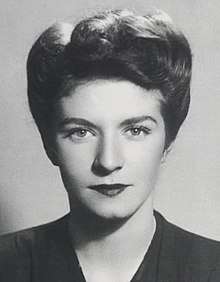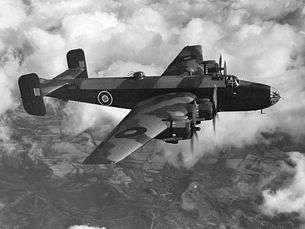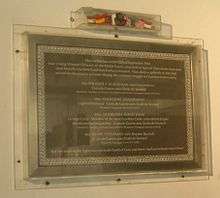Eliane Plewman
| Eliane Plewman | |
|---|---|
 Eliane Plewman | |
| Birth name | Eliane Sophie Browne-Bartroli |
| Nickname(s) |
Gaby, Dean, Madame Dupont (SOE codenames) Eliane Jacqueline Prunier (SOE alias) |
| Born |
6 December 1917 Marseilles |
| Died |
13 September 1944 (aged 26) Dachau, Germany |
| Buried | Brookwood Memorial |
| Allegiance | United Kingdom |
| Service/ | Special Operations Executive |
| Years of service | 1943-1944 |
| Rank | Ensign |
| Service number | F/23 |
| Unit | Monk (SOE) |
| Battles/wars | Second World War |
| Awards |
King's Commendation for Brave Conduct Croix de Guerre 1939-1945 (France) |
Éliane Sophie Plewman (6 December 1917 – 13 September 1944) was a British agent of Special Operations Executive (SOE) and member of the French Resistance working in the "MONK circuit" in occupied France during World War II. She was involved in a number of highly successful sabotage missions but was arrested and tortured by the Gestapo, and later murdered by the SS at Dachau Concentration Camp.
Pre-war life
Plewman was born Éliane Sophie Browne-Bartroli in Marseilles, France. The daughter of a successful English manufacturer based in France, Eugene Henry Browne-Bartroli and his Spanish wife Elisa Francesca (née Bartroli),[1] she was educated in England and in Spain at the British School in Madrid.
When she finished college she moved to Leicester to work for a clothing and fabric import/export company in Albion Street, Leicester, using her language skills in English, French, Spanish and some Portuguese.[2]
World War II
After the outbreak of the Second World War in 1939, Éliane Plewman worked for the Press Section of the British Embassies in Madrid and Lisbon until 1941. In 1942 she went to Britain to work for the Spanish Press section of the Ministry of Information.[3] On 28 July 1942 she married Thomas Langford "Tom" Plewman of Lutterworth, Leicestershire, who had recently been commissioned an officer in the Royal Artillery,[4] their home was at 14 Queen's Gate Terrace, Leicester.
Special Operations Executive
In mid-February 1943 she joined the Special Operations Executive (SOE) and was accepted on 25 February 1943 for training to serve as an "agent in the field". Éliane Plewman signed the Official Secrets Act on 29 March 1943 and a second time on 19 April 1943 (this time as second lieutenant Auxiliary Territorial Service) and commenced training at Wanborough Manor at the start of May 1943.[5][3] Despite her sylph-like figure and tiny frame – just over five foot – she took the same training course near Inverness as the men did, showing fierce determination in every exercise.[6] She learnt weapons handling, hand-to-hand combat, techniques for sabotage, clandestine survival, security, orientation, radio communications.[6] She also learnt how to kill with – or without – a weapon, how to handle explosives and detonators, sabotage railway lines, blow up trains, take on a new identity, improvise answers to any question, invent a plausible past and cover story, including a likely occupation, without ever giving herself away or contradicting herself.[6] It was with flying colours that she passed the psychological tests set for future agents by the various officers in charge of evaluating candidates, tests which would assess their determination and mental fortitude.[6] To the question, 'Why do you want to go and fight the Nazis?' she would answer in a clear voice, 'Because I hate them!"[6]

After two failed attempts on preceding nights due to bad weather, Plewman parachuted into France on the night of 13/14 August 1943 from a special duties Halifax Mark II bomber of No. 161 Squadron RAF from an altitude of little over 1,000 feet, keeping low to avoid German radar.[7] Her cover name was "Eliane Jacqueline Prunier", her codenames were "Gaby" and "Dean", or sometimes "Madame Dupont".[8] She worked for Captain Charles Milne Skepper (alias "Henri Truchot"), the organizer of SOE's Monk circuit, in which she was to be the courier in the area of Marseilles, Roquebrune and St. Raphael, providing the communications link between groups of saboteurs and intelligence gathering agents, Monk's wireless operator Arthur Steele, and other involved groups.[9]
Major General Colin Gubbins Head of SOE wrote as a part of his recommendation for her gallantry award: "She was dropped in the Jura and was separated from her circuit for some time. Instead of remaining in hiding she showed outstanding initiative and made several contacts on her own which were later of great value to her circuit. For six months Plewman worked as a courier and her untiring devotion to duty and willingness to undergo any risk largely contributed to the successful establishment of her circuit. She travelled constantly maintaining liaison between the various groups, acting as guide to newly arriving agents and transporting wireless telegraphy equipment and compromising documents."[3] At this time her older brother, Albert John Browne-Bartroli, was working as an SOE agent in a different part of France.[10][11] He survived the war and was awarded a Distinguished Service Order.[11][10] Browne-Bartroli (codename "Tiburce") had, after undergoing identical training, become head of SOE's Ditcher circuit, which was active in Bourgogne from October 1943 to September 1944, which he would lead until the Allies' final victory.[12] Tiburce would, on 14 July 1944, receive the biggest parachute drop of arms ever made to the maquis in broad daylight.[8]
Capture and imprisonment
During the night of 11 September 1944 the Gestapo collected Éliane Plewman, Yolande Beekman and Madeleine Damerment from the prison and drove them to Karlsruhe railway station in time to catch the early train to Munich. From there they caught a local train to Dachau and late in the evening walked to Dachau concentration camp arriving at about midnight. Between 0800 and 1000 hours the next morning, 13 September 1944, Éliane Plewman and three other SOE agents (Yolande Beekman, Madeleine Damerment and Noor Inayat Khan) were taken from their cell and forced to kneel in pairs before being executed by a single shot to the head by executioner Wilhelm Ruppert.[13][14][3]
Execution
Plewman was abruptly transferred to Dachau concentration camp with fellow agents Yolande Beekman, Madeleine Damerment and Noor Inayat Khan, and at dawn on the following morning, 13 September, the four women were executed.[15]
A Gestapo man named Max Wassmer was in charge of prisoner transports at Karlsruhe and accompanied the women to Dachau.[16] Another Gestapo man named Christian Ott gave a statement to American investigators after the war as to the fate of Plewman and her three companions.[17] Ott was stationed at Karlsruhe and volunteered to accompany the four women to Dachau as he wanted to visit his family in Stuttgart on the return journey.[18] Though not present at the execution, Ott told investigators what Wassmer had told him.

The four prisoners had come from the barrack in the camp, where they had spent the night, into the yard where the shooting was to be done. Here he [Wassmer] had announced the death sentence to them. Only the Lagerkommandant and the two SS men had been present. The German-speaking Englishwoman (the major) had told her companion of this death sentence. All four had grown very pale and wept; the major asked whether they could protest against the sentence. The Kommandant declared that no protest could be made against the sentence. The major had then asked to see a priest. The camp Kommandant refused this on the grounds that there was no priest in the camp.
The four prisoners now had to kneel with their heads towards a small mound of earth and were killed by the two SS, one after another by a shot through the back of the neck. During the shooting the two Englishwomen held hands and the two French-women likewise. For three of the prisoners the first shot caused death, but for the German-speaking Englishwoman a second shot had to be fired as she still showed signs of life after the first shot.
After the shooting of these prisoners the Lagerkommandant said to the two SS men that he took a personal interest in the jewellery of the women and that this should be taken into his office.[15]
This cannot be considered a reliable account as Ott told the investigator he had asked Wasser the following question after being told what had happed to the women: "But tell me, what really happened", to which Wasser replied: "So you want to know how it really happened?"[19]
Honours and awards
_memorial%2C_Brookwood_Military_Cemetery%2C_5_July_2017.jpg)
Éliane Plewman is remembered on the Brookwood Memorial in Surrey (Panel 26 Column 3),[20] and the F Section Memorial, in Valençay, France.
- King's Commendation for Brave Conduct awarded posthumously in the London Gazette 20 August 1946. "For services in France during the enemy occupation".[21]
- Croix de Guerre 1939-1945 with bronze star (France) on 16 January 1946.[3]
Major General Colin Gubbins recommended Éliane Plewman for an MBE (Member of the Order of the British Empire) on 13 July 1945 however he was over-ruled as the statutes of the award do not allow posthumous awards and she was awarded the King's Commendation for Brave Conduct instead.[3]
![]()
![]()
![]()
![]()
| 1939–1945 Star | France and Germany Star | War Medal with King's Commendation for Brave Conduct | Croix de Guerre (France) |
Notes
Post-war investigations determined very clear evidence of the fate of the group of female British SOE agents and unlike some of their colleagues, their families had detailed accounts of their time in captivity and of their deaths. Eliane Plewman's estate was settled on 25 April 1947.[22]
References
Citations
- ↑ Birth Certificate (Consul General at Marseilles), 10 December 1917 - Eliane Sophie
- ↑ "Women's Transport Service". Leicester Mercury. Retrieved 2017-09-10.
- 1 2 3 4 5 6 SOE. "Eliane Sophie Plewman" [textual record]. HS 9 - Special Operations Executive: Personnel Files (PF Series), ID: HS 9/1195/1, pp. 1. Kew, UK: The National Archives.
- ↑ "No. 35448". The London Gazette (Supplement). 6 February 1942. pp. 647–648.
- ↑ "Wanborough Manor - SOE training school". johnowensmith.co.uk. Retrieved 2017-09-10.
- 1 2 3 4 5 Contrucci, Jean; Virbel, Jacques. "8, rue Mérentié" (PDF). p. 4. Retrieved 2017-09-11.
- ↑ Contrucci, Jean; Virbel, Jacques. "8, rue Mérentié" (PDF). p. 2. Retrieved 2017-09-11.
- 1 2 Contrucci, Jean; Virbel, Jacques. "8, rue Mérentié" (PDF). pp. 3–4. Retrieved 2017-09-11.
- ↑ Contrucci, Jean; Virbel, Jacques. "8, rue Mérentié" (PDF). pp. 3–4, 22. Retrieved 2017-09-11.
- 1 2 Foot 1966, pp. p.286.
- 1 2 "No. 37228". The London Gazette (Supplement). 14 August 1945. p. 4188.
- ↑ Contrucci, Jean; Virbel, Jacques. "8, rue Mérentié" (PDF). p. 9. Retrieved 2017-09-11.
- ↑ Binney 2005, p. 275.
- ↑ Foot 1966, p. 429.
- 1 2 Helm 2005, pp. 286-287.
- ↑ Helm 2005, pp. 280.
- ↑ Helm 2005, p. 283.
- ↑ Helm 2005, pp. 284.
- ↑ Helm 2005, pp. 344.
- ↑ "Ensign E S Plewman". Commonwealth War Graves Commission. Retrieved 2017-09-09.
- ↑ "No. 37693". The London Gazette (Supplement). 16 August 1946. p. 4176.
- ↑ "No. 37887". The London Gazette. 21 February 1947. p. 913.
Bibliography
- Binney, Marcus (2005). Secret War Heroes. Hodder. ISBN 0-340829109.
- Foot, M. R. D. (1966). SOE in France. Her Majesty's Stationery Office. ASIN B0006D68X4.
- Helm, Sarah (2005). A Life in Secrets: Vera Atkins and the Missing Agents of WWII. New York, US: Anchor Books. ISBN 978-1-4000-3140-5.
Further reading
- Aubrac, Raymond; Aubrac, Lucie (2014). The French Resistance. France: Hazan Editeur. ISBN 978-2850255670. Overview of the French Resistance.
- Binney, Marucs (1995). The Women Who Lived for Danger: The Women Agents of SOE in the Second World War. London, UK: Hodder and Stoughton. ISBN 0-340-81840-9. Focus on the four female SOE agents (Borrel, Leigh, Olschanezky and Rowden) executed in the Natzweiler-Struthof concentration camp.
- Bourne-Patterson, Robert (2016). SOE In France 1941-1945: An Official Account of the Special Operations Executive's French Circuits. Barnsley, UK: Frontline Books. ISBN 978-1-4738-8203-4. A once classified report compiled in 1946 by a former member of SOE's F Section, Major Robert Bourne-Patterson, who was a planning officer.
- Buckmaster, Maurice (2014). They Fought Alone: The True Story of SOE's Agents in Wartime France. Biteback Publishing. ISBN 978-1849-5469-28. Buckmaster was the head of SOE's F Section, who infamously ignored security checks by captured SOE wireless operators that indicated their capture, resulting in agents being captured and executed.
- Crowdy, Terry (2007). French Resistance Fighter: France's Secret Army. Oxford, UK: Osprey Publishing. ISBN 978-1-84603-076-5. Comprehensive coverage of the French Resistance.
- Escott, Beryl (1992). A Quiet Courage: The story of SOE's women agents in France. Sparkford, UK: Patrick Stevens Ltd (Haynes). ISBN 978-1-8526-0289-5.
- Foot, M.R.D. (1999). The Special Operations Executive 1940–1946. London, UK: Pimlico. ISBN 0-7126-6585-4. Overview of SOE (Foot won the Croix de Guerre as a SAS operative in Brittany, later becoming Professor of Modern History at Manchester University and an official historian of the SOE).
- Grehan, John; Mace, Martin (2012). Unearthing Churchill's Secret Army: The Official List of SOE Casualties and Their Stories. Pen and Sword. ISBN 978-1848847941. Detailed look at SOE casualties and selected stories that are representative of the experience of SOE personnel.
- Howarth, Patrick (1980). Undercover: Men and Women of the Special Operations Executive. Abingdon, UK: Routledge. ISBN 978-0710005731.
- Marshall, Bruce (2000). The White Rabbit: The Secret Agent the Gestapo Could Not Crack. London, UK: Cassell. ISBN 978-2280022071.
- McDonald-Rothwell, Gabrielle (2017). Her Finest Hour. Stroud, UK: John Murray. ISBN 978-1445661643. The second and most recent biography of Rowden.
- Milton, Giles (2016). Churchill's Ministry of Ungentlemanly Warfare. London, UK: Amberley Publishing. ISBN 978-1-444-79898-2. A thorough overview of SOE.
- Nicholas, Elizabeth (1958). Death Be Not Proud. London, UK: Cresset Press. ASIN B0006D98MW. The first biography of Rowden.
- O'Conner, Bernard (2014). Churchill's Angels. Stroud, UK: Amberley Publishing. ISBN 978-1-4456-3431-9. Overview of the scores of female SOE agents sent into occupied Europe during WW2 including Borrel.
- Ousby, Ian (2000) [1999]. Occupation: The Ordeal of France, 1940–1944. New York, US: Cooper Square Press. ISBN 978-0815410430. Comprehensive coverage of the German occupation of France.
- Sebba, Anne (2016). Les Parisiennes: How the Women of Paris Lived, Loved, and Died Under Nazi Occupation. New York, US: St. Martin's Press. ISBN 978-1250048592. Look at the lives of women in Paris during WW2.
- Stevenson, William (2006). Spymistress: The Life of Vera Atkins, the Greatest Female Secret Agent of World War II. New York, US: Arcade Publishing. ISBN 978-1-5597-0763-3. Overview of Atkins' activity at SOE (served as Buckmaster's intelligence officer in the F Section).
- Suttill, Francs J. (2014). Shadows in the Fog: The True Story of Major Suttill and the Prosper French Resistance Network. Stroud, UK: The History Press. ISBN 978-0-7509-5591-1. Written by the son of Major Francis Suttill, the Prosper network chief executed by the Nazis in 1945.
- Stroud, Rick (2017). Lonely Courage: The true story of the SOE heroines who fought to free Nazi-0ccupied France. New York, US: Simon & Schuster. ISBN 978-14711-5565-9. Documents the activities of female SOE agents in France including Borrel.
- Thomas, Gordon; Lewis, Greg (2016). Shadow Warriors: Daring Missions of World War II by Women of the OSS and SOE. Stroud, UK: Amberley Publishing. ISBN 978-1445-6614-45. Documents the activities of female OSS and SOE agents in France including Borrel.
- Verity, Hugh (2000). We Landed By Moonlight: The Secret RAF landings in France 1940-1944. Manchester, UK: Crécy. ISBN 0947554-75-0. Documents RAF small aircraft landings in France during WW2 (author was one of the pilots).
- West, Nigel (1992). Secret War: The Story of SOE, Britain's Wartime Sabotage Organization. London, UK: Hodder & Stoughton. ISBN 0-34-051870-7. Overview of SOE activities.
- Yarnold, Patrick (2009). Wanborough Manor: School for secret agents. Hopfield Publications. ISBN 978-0956348906.